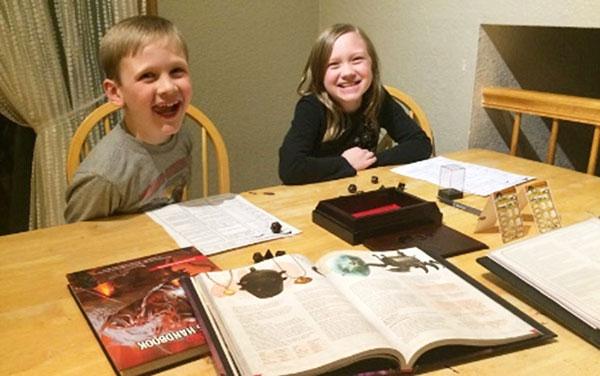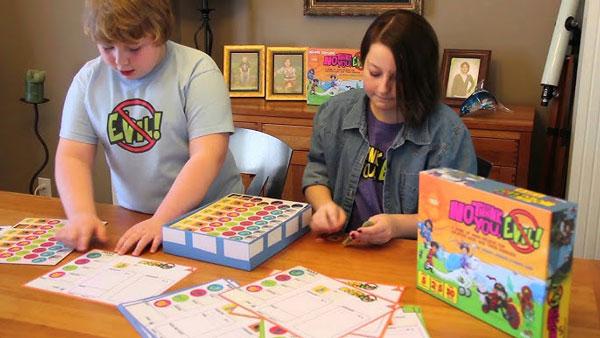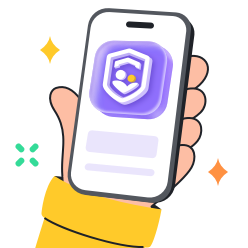Do you want to enhance your kid’s creativity and imagination power? Well, we’ll suggest you start playing the Dungeons and Dragons game for kids. This remarkable game allows your children to become champions in an adventure-filled magical universe where they can discover mysteries, solve mazes, and fight various creatures.
Thus, it assists in the growth of crucial skills in children and, at the same time, ensures they are engrossed in a world full of dreams and creative possibilities. In this article, I’ll completely guide you about the gameplay of DND for kids. I’ll also give you simple tricks to apply to make games interesting for all ages. So, continue reading!
Is Dungeons and Dragons suitable for kids?



Dungeons and Dragons (DND) is such a nice game for children since it’s imaginative and flexible, or even the whole family may join in. In addition, it does not require any particular skills or training in advance, which means you and your child can practice together.
It is a game in which children can role-play real-life or imaginary situations by creating characters who possess different skills and qualities. There is also no standard board and rules that govern the play; hence, you can modify the game to suit your child or simplify it however you wish.
An aspect that is unique about D&D is that it develops sharing and teamwork. For instance, you and your child can engage in a dramatic role-play where you work together to solve problems, complete tasks, and develop new stories together. This enhances communication and the learning of problem-solving in a pleasing way.
It is also possible to ask family members or friends to participate, making it even more fun. It is a group effort, and the pressure is off because no one is trying to win; everyone is just having a good time.
Dungeons and Dragons gameplay
Imagine being a part of your favorite adventure story, but this time you get to be the hero; this is the best description ever of Dungeons and Dragons (DND). You and your colleagues consist of brave knights, clever wizards, or even archers, and you work in teams to unravel puzzles, fight terrifying foes, and explore wondrous lands.



A storyteller known as the Game Master (GM) directs the game and everything that goes down in it while playing. If your character goes for a new quest searching for some treasure or has to escape a new foe, you decide how they approach all of these based on their own characteristics).
The game is entirely played through speaking with each other while dice are used to clarify the desired outcomes for the characters, e.g., your character decides whether they want to scale a wall/draw, a sword to fight, and an outcome is determined through rolling a single die. Whatever material you seem to have around you is more than enough for the game, whether it be a board, tokens, D&D dice or any other prop that calls forth your creativity.
Thus, we can say that it is also just perfect for children who love to bond with their peers or family through interactive sessions.
Playful and educational activities with kids
The benefits of playing Dungeons and Dragons for kids
Dungeons and Dragons is not only a game where you get to spin around hats and fight for the throne, but it is also an educational structure for kids. Let’s why it’s beneficial for your kids!



Sparks creativity:
Imagination is where it all starts. Together we build our own characters and dive into old alleys of magic structures. What about volcanoes full of magical flying worms? Or, impressive yellow colored Spaghetti monsters? Every now and then, you’re just expanding your creativity.
Builds teamwork:
Dungeons and Dragons is all about collaboration. Whether it’s trying to defeat a terrible monster or trying to escape from an evil wizard, it has to blame the team for coming in each other’s ways.
Improves problem-solving skills:
This game is full of puzzles and many more fascinating challenges. You have to think critically about the next step and many other choices that improve your problem-solving skills.
Interaction with fellow players.
It’s quite interesting when a player has to explain in detail the things that their characters do or share elaborated and creative ideas. This advances your communicative abilities.
How to play Dungeons and Dragons suitable for kids?
Dungeons and Dragons (DND) is an incredible game, and there’s always the possibility of scaling it and adjusting it for kids of all ages. You will create exciting journeys, set straightforward game rules, and keep all the kids busy. By age-appropriate focusing, the game can be thrilling and easier to play for children. Let’s discuss some basic rules that you must focus on on to enhance your kid’s gaming experience according to your kid’s age.
DND for ages 6-8 kids
Younger kids should be introduced into the game on a much more basic level, where winning doesn’t matter but rather the story, and their imagination does. You, as their Dungeon Master (DM), will be telling them a story.



Creating characters:
Ask children to pick very basic characters such as a knight, sorcerer, or a healer. Provide them with one or two special skills which can be as simple as “swing sword” or “fireball”.
Playing the Game:
Emphasize its exploration aspect, such as seeking treasure in caves, rescuing lost pets, and many other fun activities. You can use eggshells to present exciting new escapades.
Combat rules:
Combat can be more easily facilitated utilizing just one standard 6-sided die. High digit means success and low means a great rate of failure.
Game time:
You must limit the durations to 30 to 45 minutes. Otherwise, they will get bored or drained out.
DND for ages 9-12 kids
This aged group kids do not require too much concentration on how the game is carried out, you may put more fun elements but this time around they are a bit more structural. For instance;



Creating characters:
Allow the kids to come up with their own characters that have interesting backgrounds, for instance, they can come up with a wizard who is highly intelligent but has the phobia of spiders. This can be done with a character sheet, but keep it basic.
Exploring adventures:
Appoint a few sections like ‘Florida: the Mighty and Brave Wizards’ from which the kids can pick up and set sails to make the grand adventure. Allow them to make decisions at every point which will in turn help in moving the storyline forward.
Combat rules:
Combat can be done using dice. In this case, a critical-cut roll of dice or 20-sided die will be covered up called d20. You say you need to roll high, yes, to win. Roll too low; brace for a massive teaser.
Teamwork focus:
You need to design scenarios where they need to collaborate, for example, working on a riddle or attacking a large monster.
Game time:
The length of time you can spend with them is two hours, but you can even extend it too, depending on their engagement.
DND for children aged 12 and above
With older children, a more complex side of Dungeons and Dragons can be introduced as this age group is great for deeper storytelling and rule comprehension since they are able to engage in a closer version of the standard game of Dungeons and Dragons.



Character creation:
You have to provide the full range of character abilities and backstories the students are capable of creating. Equip the students with skills that will be represented in their in-game hero.
Adventures and challenges:
Make the storyline deeper and manage to build up defeats of great evil in order to find more lost cities and roam around dungeons. Let them mess around and change parts of the story how they see fit.
Combat Rules:
Ensure to explain topics such as D&D hitpoints and armor when it’s time combat introduces itself. Standard practices for combat role-play include rolling dice for damage/hit confirmation. This can be adjusted accordingly.
Encourage role Playing:
Allow the kids to roleplay their character through voice, attitude and decision-making. This enhances the overall experience of the game.
Game Time:
Depending on how everyone is busy and interested, the session can take 2 –3 hours.
Tips to remember
Regardless of age, make the game enjoyable and flexible. The rules of the game can always be changed and the aim is to make the experience more enjoyable. Dungeons and Dragons allows children to be heroes, solve problems, and go on quests, all while you bond. With just a little creativity and collaboration, the sky is the limit.
Tips for playing Dungeons and Dragons with kids
Dungeons and Dragons is often experienced as a game full of magic and wonder, especially when you play with children. With some tricks, this game can be streamlined, fun, and captivating for players of all ages.



Keep it simple and fun:
If you’ve never played D&D before, don’t stress about knowing the rules right from the beginning. Rather, aim at having fun embarking on an imaginative journey with a clear plot. For instance, the kids may help a puppy find its way home, or the kids may search for lost treasure.
Let kids be creative heroes:
One beneficial side of D and D is the endless possibilities for children as they craft their characters. Allow them to believe they can be anyone; an animal-loving knight, a fire-controlling wizard, or a helpful thieving rogue. Let them elaborate on how their characters look and behave. It makes the game interesting and special for them.
Play short adventures:
Kids have a very short focus, so make the game sessions brief. Make it so that each session lasts between 30 to 60 minutes at most. When they are having fun playing the game, you can tell the rest of the story in the next session.
Use kid-friendly rules:
You do not have to follow all the D&D rules exactly. Pick a number that feels right. In something as simple as an attack, roll a single six-sided die. Success is if a high number is rolled, and failure is if not. It also keeps them engaged in the gameplay, simplifying it for even young children.
Encourage teamwork and friendship:
Since D&D is a team activity, it is ideal to educate children about unity. Make them work together in meaningful ways. For example, create a challenge about how they have to work together to help each other solve a complex puzzle or combat a dragon.
Games like DND for kids
If you are looking for games similar to DND for kids, many options can be pretty engaging for young children’s imagination and teamwork. Children can quickly learn and play these games, offering incredible developmental skills. So, let’s discuss them one by one!
1. Hero kids
Hero Kids is a nice RPG game developed solely to accommodate the young audience. In this game, you and your kids are young heroes who travel to fantasy lands, defeat monsters, solve children-friendly puzzles, and use magic. The rules are easy to grasp, and it uses pictures, maps, and dice to navigate the game’s plot.



How it’s beneficial for kids?
Hero Kids develops the child’s problem-solving skills and helps them understand the concept of teamwork. While solving some pretty interesting puzzles, your child will feel like a superhero.
2. No Thank You, Evil!
This family-friendly game is easy to pick up and filled with creativity and new ideas. The kids, together with you, create fictional characters and, together with them, set off to an unusual world with bizarre characters and comic situations. Simply rolling the dice determines whether you succeed at your action or will be forced to exert yourself again.



How it’s beneficial for kids?
Children can develop skills needed during their elders’ calls. It is also suitable for assisting children in learning how to make decisions in a fun manner.
3. Rory’s Story Cubes



Rory’s Story Cubes is not a role-playing game like D&D but is ideal for storytelling fun. You use nine different dice with pictures on them, roll them, and attempt to invent a new story. The game can be played alone and in a group; hence, it is suitable for all ages of stories.
How it’s beneficial for kids?
This game ignites creativity in children, enhances their narration of stories, and helps them join different concepts together. Also, storytelling with your children is a good time to connect with them.
4. Stuffed Fables



In Stuffed Fables the participants play as stuffed animals whose aim is to fight scary creatures in the night to protect their child. The gameplay is similar to some children’s books where a player goes through pages of the book to explore the story further. Players employ cards and dice to resolve problems, defeat villains, and progress through the plot.
How it’s beneficial for kids?
Playing this particular game boosts empathy and improves certain skills like teamwork by virtue of the game’s design.
5. Mice and Mystics



This is a game where you and your children can tell only the most splendid of tales, as it focuses on the story, not the players. What happens when players lose to evil? In Mice and Mystics, players experience all that and much more as they each take on the role of courageous mice.
How it’s beneficial for kids?
It also helps boost creativity and teamwork abilities among kids.
Conclusion
In a nutshell, games like Dragons and Dragons play a big role in developing creativity and imagination power among kids. These games also boost kids’ decision-making power. These are all those skills that are very crucial in practical life scenarios.



However, there is a mobile version of this kind of game, and kids may spend a lot of time on it and may become addicted to it. Thus, they lose interest in studies and it also badly impacts their physical and mental health. No worries you can use the FlashGet Kids parental control app to watch their daily usage and if you see if they are playing too much, you can limit their screen time or even block the game.

